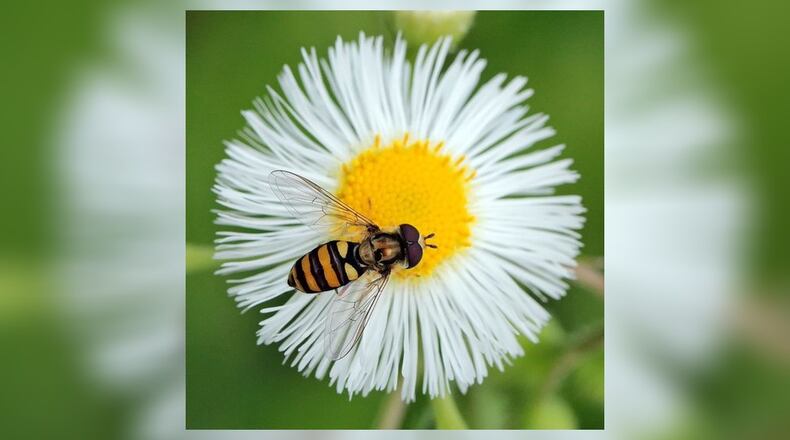Charles Seabrook’s “Wild Georgia” column appears weekly in The Atlanta Journal-Constitution.
Most people probably regard flies as detestable, disease-carrying pests to be swatted on sight. But without flies, the world would be in big trouble. Many fly species help control serious plant pests such as aphids, which can destroy entire crops. Other flies are part of nature’s cleanup crew, helping decompose dead animals and recycle organic wastes such as manure, which, if not controlled, would overwhelm the landscape.
As unappealing as they seem, common house flies help break down untold tons of organic wastes. The larvae (maggots) of blowflies feeding on a dead carcass may be a disgusting sight, but as they decompose the rotting flesh, they recycle nutrients that are released back into the soil for use by plants.
But one of the most vital ecological roles of thousands of fly species worldwide may be greatly underappreciated — their roles as pollinators of crops, flowers and other plants. Flies, in fact, rank second only to bees as the world’s most important pollinators.
Scientists have discovered 150 fly families; of those, 71 are known to sip nectar and transfer pollen, vital for plant reproduction. Within the 71 families are thousands of species around the globe. Without them, a vast amount of the world’s food supply would be in jeopardy.
In Georgia, many of the most common pollinating flies— so-called flower flies, or hover flies — now flitting about wildflowers and garden plants are in the family Syrphida, which includes as many as 80 species in the state. Another benefit: Their maggots feed on aphid pests.
Most observers, though, may think they're looking at stinging insects because most Syrphid flies have evolved to look like bees, wasps and hornets with bold black-and-yellow stripes. The mimicry helps the flies avoid being eaten by birds.
More information: https://www.fs.fed.us/wildflowers/pollinators/animals/flies.shtml
IN THE SKY: From David Dundee, Tellus Science Museum astronomer: The moon will be last quarter on Thursday. Venus is low in the west at dusk and sets less than an hour later. Mars rises about four hours before dawn and will appear near the moon Thursday night. Jupiter and Saturn rise in the east just before midnight; both will appear near the moon on Tuesday night.
About the Author
Keep Reading
The Latest
Featured


